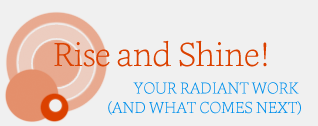For the last decade, I have lived in various houses near Mount Gravatt.
Mount Gravatt is an oversized hill with a repeater dish on top. It is utterly lacking in mystery, intrigue and romance.
I still like it. I’ve been meaning to go eat my lunch at the top of that place for the entire decade that it’s been in my vicinity.
But I’ve never done it.
For many years there were reasons that was difficult: Day Job, no car, yadda yadda. Nowadays, I have no reason that’s stopping me from going. None at all.
Yet here I am, still eating lunch at my house, while Mount Gravatt lurks just a kilometre or two away. I want to go. There’s no reason at all for me NOT to go.
But there’s been no pressing reason for me to go, either: to bother putting on my shoes, packing up my lunch, backing the car out of my horrible driveway, etc etc etc… it feels pathetic to say it, but that’s a meaningful amount of effort.
It’s just easier to sit here and eat my lunch on the couch.
Welcome back to high school science lab.
*white lab coat and safety goggles… on*
Remember inertia? It’s a basic principle of physics: bodies at rest tend to stay at rest.
Simple physics: in order to create motion, you must impart enough energy to overcome inertia.
If you don’t, then the object goes… nowhere.
You can try this right now, science fans.
- Put a pencil on a notepad.
- Remove all obstacles in its path.
- Raise the end of the notepad an inch so the pencil wants to roll downhill.
And what happens? Not a damn thing. Inertia holds that pencil in place like it was glued there.
It wants to move, and there’s nothing in its path stopping it. But it doesn’t move.
It’s the same with me and that mountain.
It’s the same with your people and the offerings you present to them.
It’s not enough to make something people want.
It’s not enough to remove the obstacles and objections.
You have to do more.
You have to help your people overcome inertia.
This doesn’t require force, except in the most technical scientific sense. It’s better to think about it as requiring energy.
Scarcity is a source of energy. It says, “Do it quick, before we miss out!”
Peer pressure is a source of energy. It says, “Do it now, so we can belong!”
Caring is a source of energy. It says, “Do it now, so [someone] can benefit!” (The [someone] might be the client, or you, or a charity, or someone else.)
All of these things create urgency. Urgency overcomes inertia. Voilà! Movement.
Which is why all my launches in future will be closed, not open.
I refused, totally utterly refused, to use urgency for quite a long time. “It’s fake,” I said. “But I want to be available when my readers are ready,” I said. “Transformation takes time, and you have to be ready for it,” I said.
These are all true statements. But they don’t matter as much as inertia does.
My buy-it-whenever-you-like-seriously-it’s-all-good offerings did nothing to impart the motion toward buying it NOW instead of six months from now. And as the mountain and I both know, six months becomes a decade pretty damn quickly.
People wanted the offerings, the same way I want to eat overlooking the city. In most cases there was nothing stopping people from signing up that day. But they didn’t.
“It can wait. I’ll get it next week after that cheque comes in. I’ll get it after I buy that other thing I’ve had my eye on. I’m thirsty. I better go feed the cat. Where was I?”
Does it make that much difference?
Yes.
I admitted to my newsletter subscribers that my leave-every-offer-open,-forever-and-ever, launch style wasn’t really working for either of us. So I announced that access to the awesometacular Cash and Joy Foundations resource would be closing in one week.
I tripled my sales total in that week.
Tripled.
Nothing about the resource had changed except for two very small things:
- I told people about the resource more often.
- It had an end date.
I heard from people who have been reading this website for six months without ever making contact.
I heard from people who suddenly wanted to take action, rightthissecond, and wanted to ask more about the resource.
I heard from people who were wondering if they should sign up right now because they have these things coming up, and they don’t want to miss out, so…
That is a lot of overcome inertia.
But doesn’t it feel manipulative?
No. I thought it would, but it doesn’t.
Let’s be clear: urgency is manipulative. You are manipulating external conditions in order to produce a result.
But you’re not manipulating people.
It’s an important distinction.
My bestest people wanted this resource.
My bestest people could afford this resource.
I manipulated the conditions to say that NOW would be a good time to get started.
That’s all.
Some people don’t have the money now, or the free time, or the headspace, or whatever. Some of them emailed me to find out when it re-opens. (Later October-ish, by the way: you can pop your email into the box to find out exactly when.)
That’s only two months away. By that time they will have either figured out the answers for themselves – yay! – or be one zillion percent ready to rock it out when it does re-open.
In the meantime, there are twenty people rocking it out now who might never have signed up, ever, if I had stayed with the doors-don’t-close model.
No movement, no action.
Urgency works.
I am now a convert.
I unashamedly and unreservedly apologise to urgency. You were right, I was wrong. I’ll be seeing you a lot in future.
But first, I gotta go have lunch up this damn mountain.
You might be wondering how I’ve stayed in business this long without using urgency at all: it’s because I do a lot of other things very, very well. Want to learn more? Sign up for Mo’Cash, Mo’Joy and we can talk about how you can do the same in a free 30-minute Marketing Check-up!
 photo credit:
photo credit:







